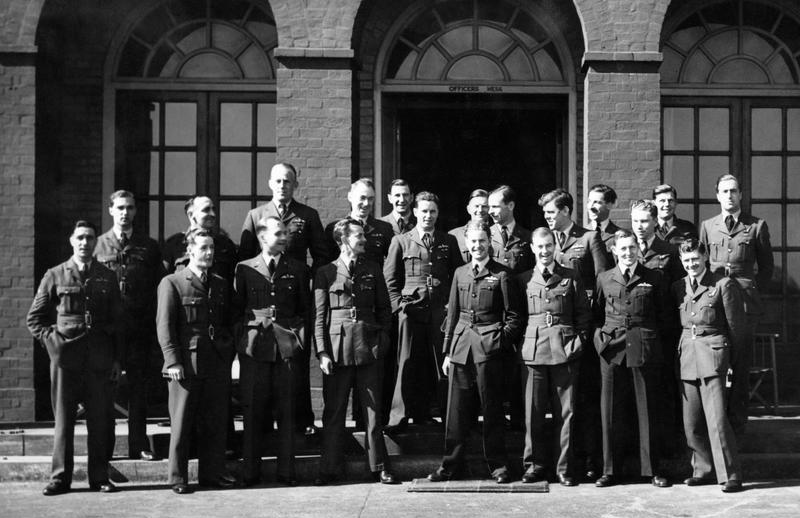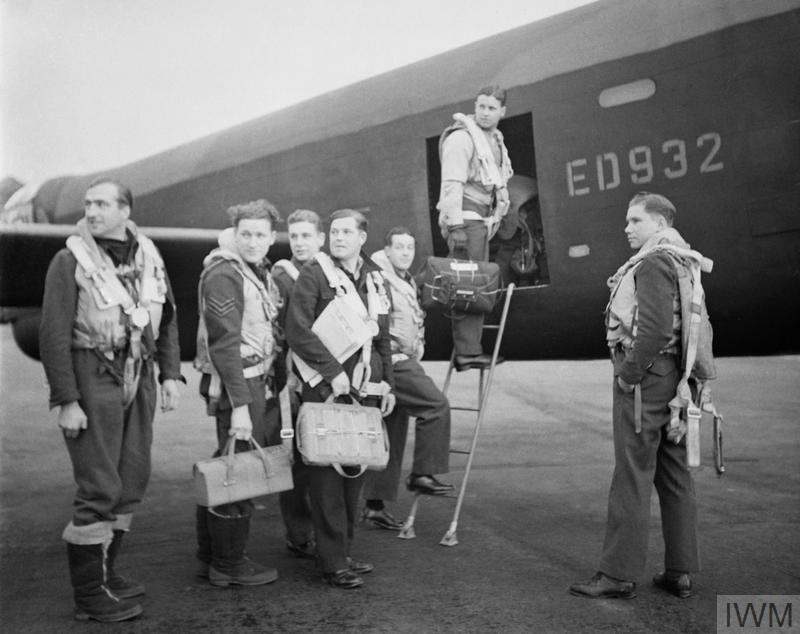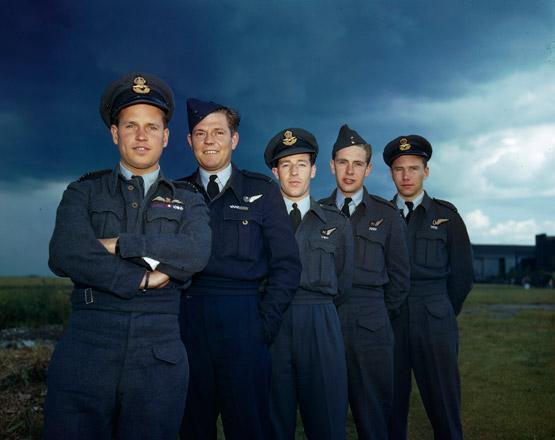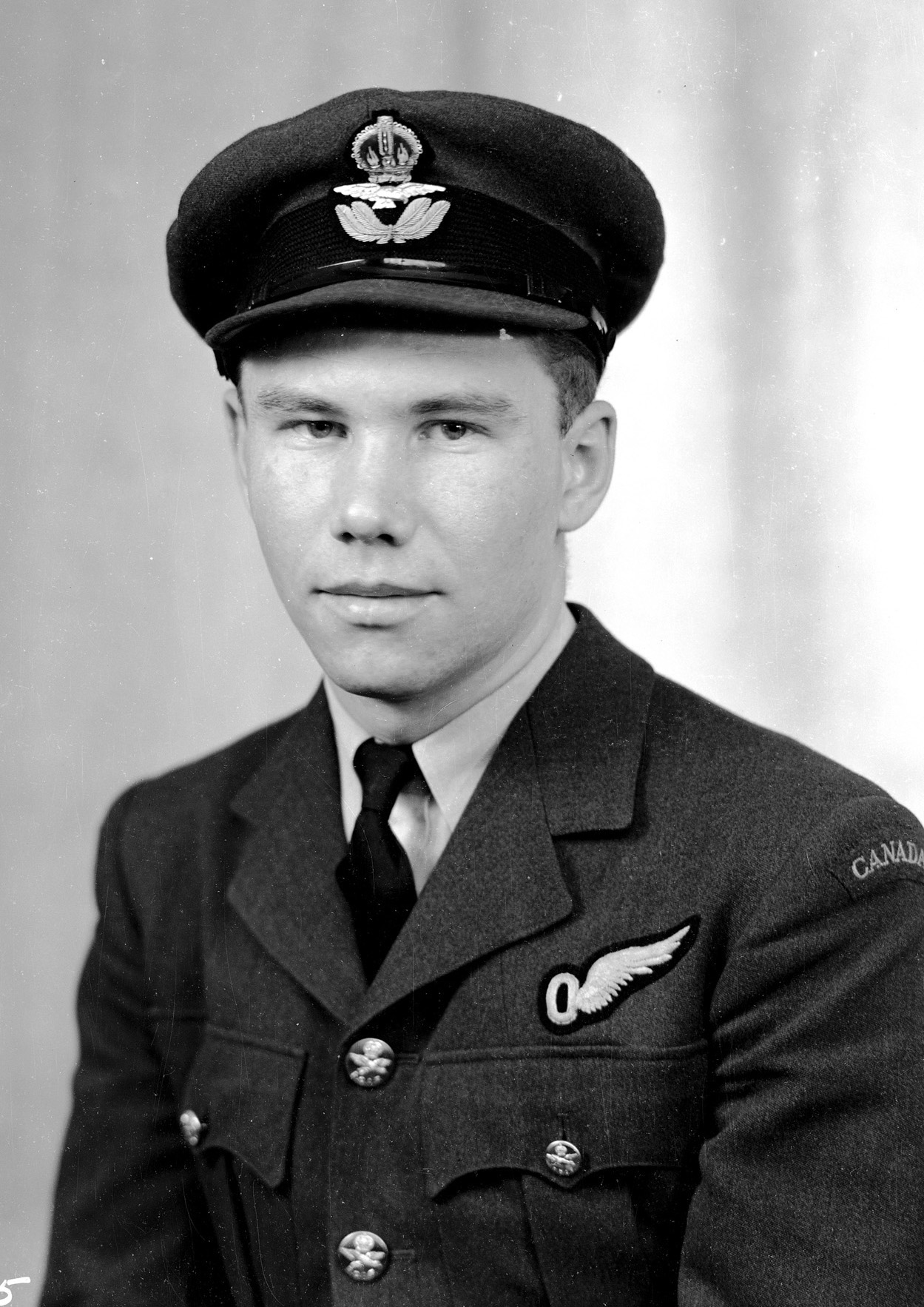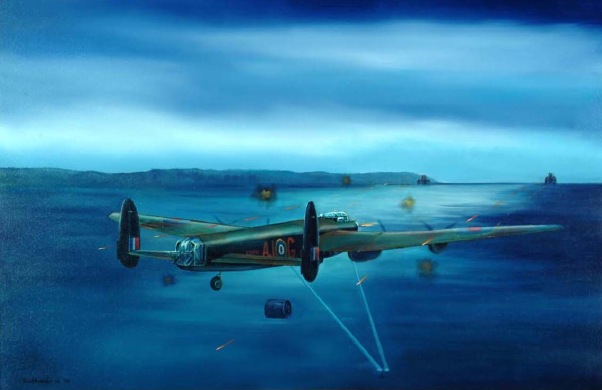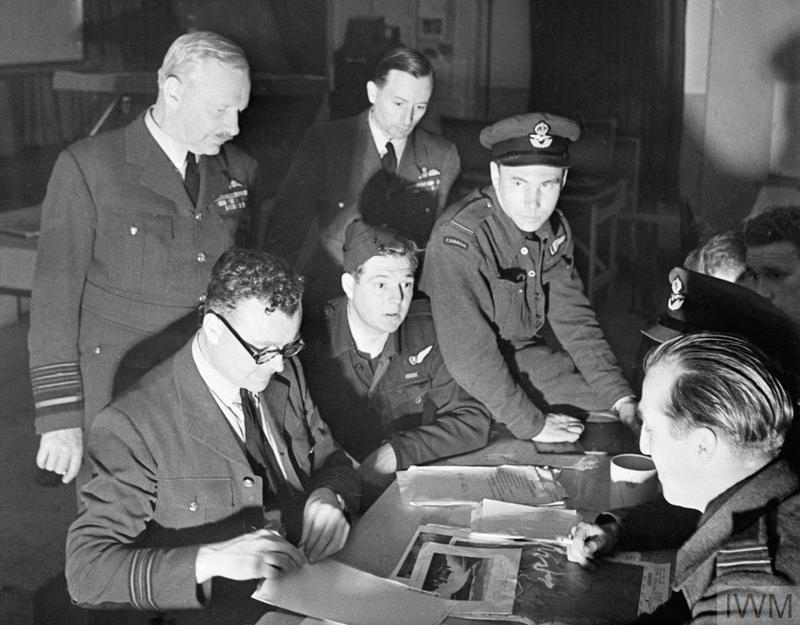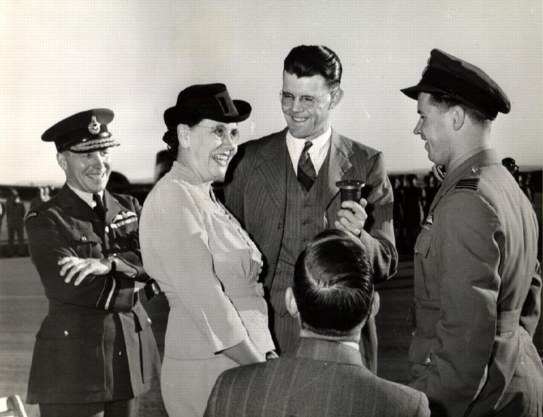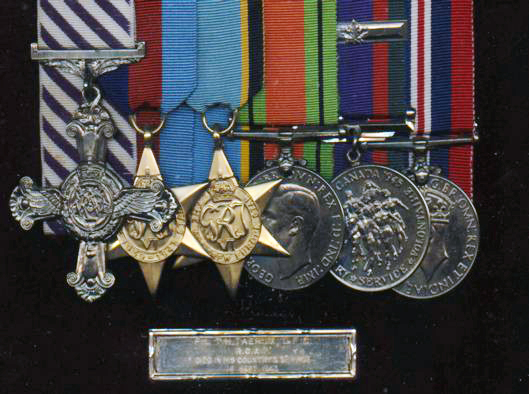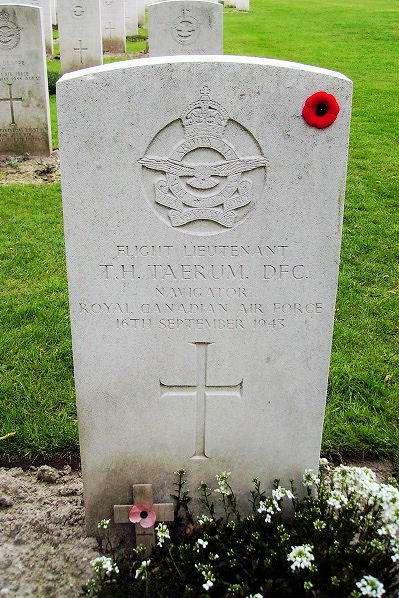Profile of Courage: Remembering a soft-spoken farm boy from Alberta
News Article / November 8, 2018
Click on the photo under “Image Gallery” to see more photos.
By Dave Birrell
As Remembrance Day approaches, we honour those who served—and continue to serve—in the Canadian Armed Forces. As this year marks the 75th anniversary of the famed Dambusters Raid, it’s fitting we remember a “soft-spoken” farm boy from Alberta who was navigator for Wing Commander Guy Gibson, the commanding officer of 617 “Dambusters” Squadron, during the raid.
In early 1943 the Allies needed a hero and something to celebrate. Britain, Canada, and other members of the Commonwealth had been at war for three and a half long years and although the tide seemed to be slowly turning, Bomber Command was still the only offensive punch that was capable of making itself felt within Hitler's European fortress.
The story of the raid on the dams of the Ruhr Valley is well known. The creation of the specialized bouncing bomb by the brilliant Barnes Wallis, the special squadron—617 Squadron—whose aircrew was hand-picked by Guy Gibson to deliver it, and the successful low level attack by 19 specially modified Lancasters that breached the dams has been thoroughly documented in books and the highly acclaimed 1950s movie. It is an enduring tale and few stories of the Second World War stand out so prominently as that of the Dambusters.
Wing Commander Guy Gibson has been described as dashing, tenacious, and a born leader. Awarded the Victoria Cross following the raid, the accompanying citation stated that his "personal courage knew no bounds" and that "he has shown leadership, determination and valour of the highest order". Air Marshal Sir Arthur Harris, commander of Bomber Command, wrote that "his personal contribution towards victory was beyond doubt unsurpassed”.
Gibson's navigator—the lead navigator on the Dams Raid—was Torger Harlo Taerum, a farm boy from southern Alberta. Gibson described his "great pal" as having, "a soft Canadian accent" and "probably the most efficient navigator in the squadron".
Harlo Taerum's father emigrated from Norway and established a farm near Milo, Alberta, 70 kilometres northeast of Nanton. Tragically, he drowned when Harlo was ten years old. Despite playing a major role on the family farm and in the raising of his two younger brothers and sister, the young Harlo Taerum excelled at school, the newspaper reporting that he "obtained the highest number of passes during a single term since the school's inception".
Taerum’s father often spoke to him about his beautiful homeland. His mother recalled that "when Norway was invaded by the Germans and reports began to filter through of the manner in which his father's people were being treated, Taerum enlisted in the Royal Canadian Air Force".
He began training at No. 1 Air Observers Training School at Malton, Ontario, in February, 1941. Harlo “Terry” Taerum went on to train at No. 1 Bombing and Gunnery School at Jarvis, Ontario, and completed the advanced air navigation course at Rivers, Manitoba. Like many young aircrew, he was honoured to have his “wing” presented by Air Marshal Billy Bishop, VC.
Taerum crossed the Atlantic as the navigator of a Lockheed Hudson. Captain H.C. Moody was the pilot and the non-stop flight was completed in a record-breaking time of 10 hours and 44 minutes from Gander, Newfoundland, to Prestwick, Scotland. Taerum began operations with No. 50 Squadron, flying Hampdens, on January 2, 1942. He gained wartime experience rapidly, his logbook recording being "caught in searchlights”, "severely hit by flak” and, on March 25, "crashing at Rose Vedne".
In March, the squadron began flying Manchesters. Assigned to the squadron's conversion unit, Taerum spent time as a navigation instructor and continued to fly operations, but now in Lancasters, including two missions to Berlin with Flight Lieutenant Harold "Mick" Martin.
Australian Mick Martin is said to have been a magnificent pilot, who had gained a reputation for his skill at low flying at night. It was likely because of these skills that he was chosen by Gibson and it is thought that Martin, in turn, may have recommended Taerum to Gibson. To have been hand-picked to be Gibson's navigator is likely the greatest compliment that could have been paid to a Bomber Command navigator.
At dusk on May 16, 1943, Taerum recorded the take off for the dams raid at 9:40 p.m. The winds were stronger than anticipated as the Lancasters roared over the North Sea at the lowest possible altitude. Taerum found himself off the planned route when the coast was reached.
Gibson wrote: "We pulled up high to about 300 feet to have a look and find out where we were, then scrammed down on the deck again as Terry said, 'OK—there's the windmill and those wireless masts. We must have drifted to starboard. Steer new course -095 degrees magnetic, and be careful of a little town that is coming up straight ahead’.” The navigation now was partly in the hands of the bomb-aimer who was using a special roller to identify features such as railway lines and canals and to avoid high-tension lines.
When all was ready, Gibson manoeuvred into position to attack. Taerum's duty as the aircraft approached the dam was to make sure the aircraft was at the required altitude of 60 feet (18.29 metres) and he took his position at the Perspex blister on the starboard side of the cockpit. As they approached the dam he switched on the two spotlights mounted under the aircraft at 00:25 and began giving directions to Gibson: "Down-down-down". After the two spotlights converged into a single spot on the water: "Steady-steady".
Following the raid, Taerum was presented with the Distinguished Flying Cross by the Queen Elizabeth, wife of King George VI, at Buckingham Palace. In letters to his mother he wrote of the attention he was receiving. "One morning they woke me up and told me that I had been awarded the DFC. Later I had the ribbon sewn on my tunic. Can you imagine me strutting around town with it afterwards; We were just about mobbed for autographs; We were ordered back to our stations to meet the King and Queen. I was really lucky because I was introduced to both of them. The Queen is most charming and gracious. It was really quite a day."
Following these days of glory, Taerum and the other members of the squadron returned to operations.
In September 1943, Gibson travelled with Winston Churchill to Quebec City on a highly publicized visit to North America. Gibson travelled across Canada, visiting British Commonwealth Air Training Plan facilities "so the men in the camps may be inspired to follow his example". His visit to Calgary was front-page news; he was welcomed by Mayor Andrew Davison and there were march-pasts, a parade, and newspaper and radio interviews.
While in Calgary, Gibson met Mrs. Hilda Taerum, Terry Taerum’s mother. "Terry is a great boy and a great navigator. He got the whole squadron to the dam," Gibson told her.
Mrs. Taerum said that meeting Gibson was "one of the proudest and happiest times of her life."
On September 17, 1943, Taerum and three other members of Gibson's Dambusters crew were killed when their Lancaster was shot down at low level while attacking the Dortmund-Ems Canal. Hilda Taerum learned that her son had been reported missing less than a week after Gibson’s visit. A year later, Terry's 18-year-old brother was killed on his sixth operation when his Lancaster was shot down over Holland.
Flight Lieutenant Taerum is buried in the Reichswald Forest War Cemetery in Germany.
He was only 23.
Dave Birrell is a member of the Bomber Command Museum of Canada’s board of directors and the museum’s librarian. This article was originally published on the Museum’s website and is translated and published with permission.
Page details
- Date modified:
